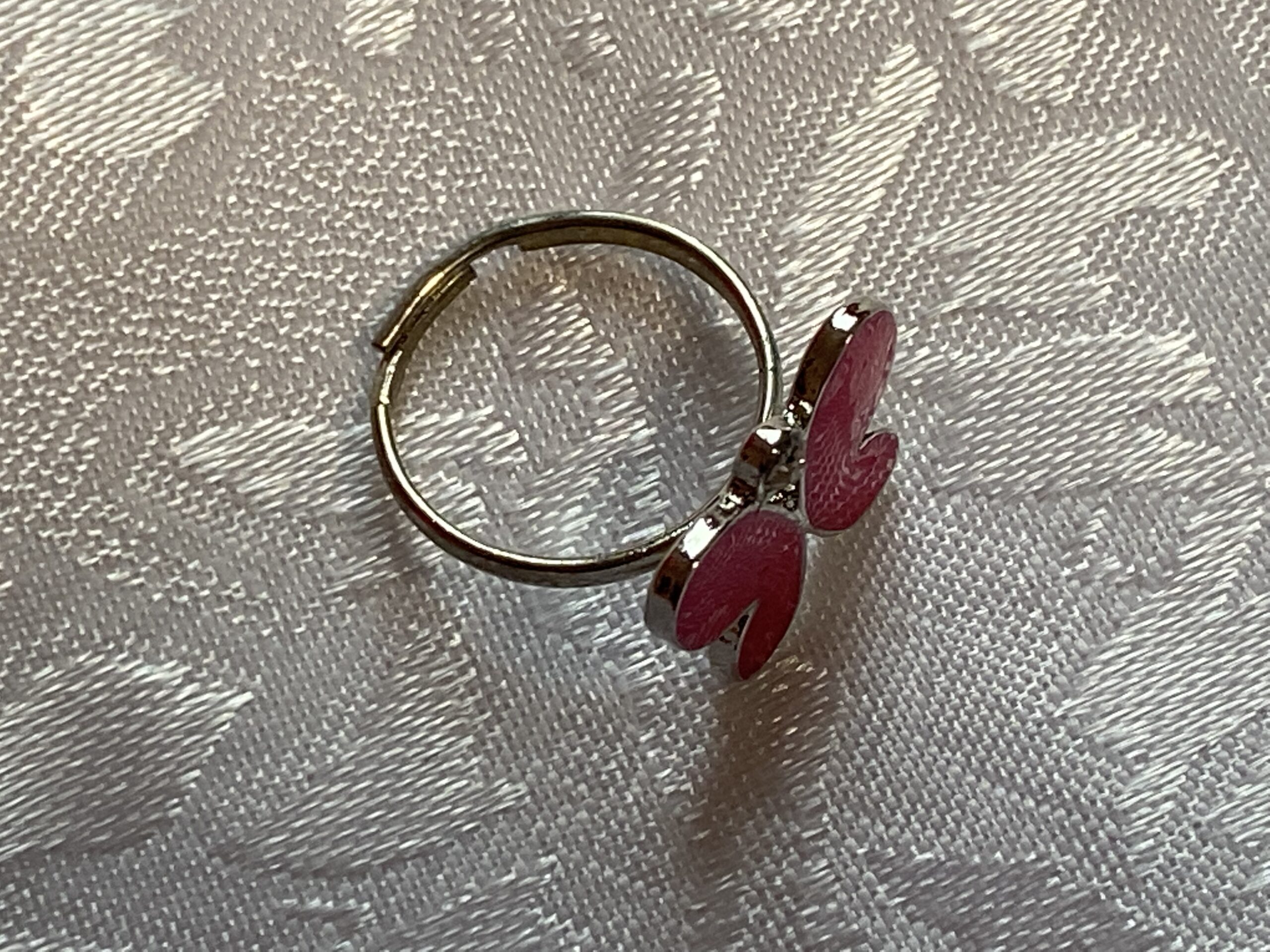Paparazzi Accessories children’s ring, pink butterfly with crystal: 211,800 ppm Cadmium & 7,294 ppm Antimony (both are known carcinogens).
Paparazzi Children’s Jewelry Examples
Published: February 16, 2022 – Wednesday
Please read this overview post (link) for context about the levels of metals found in this Jewelry.
Some additional information for folks new to this website:
- To see all posts related to Paparazzi Accessories on this website, click here.
- For a summary of regulatory standards for Cadmium, click here.
- For a menu of categories of posts on this website, click here.
- To watch my “Tea Time” interview with Tracey of Crack The Crown, click here.
- For more posts related to costume jewelry, click here.
Full XRF test results for the Children’s Paparazzi ring (pictured here) with pink enameled butterfly and one crystal
30-second test [repeated multiple times to confirm results.]
- Lead (Pb): non-detect
- Cadmium (Cd): 211,800 +/- 800 ppm
- Mercury (Hg): non-detect
- Bromine (Br): non-detect
- Chromium (Cr): non-detect
- Copper (Cu): 608,300 +/- 1,100 ppm
- Zinc (Zn): 138,900 +/- 700 ppm
- Titanium (Ti): 25,900 +/- 1,200 ppm
- Zirconium (Zr): 1,123 +/- 46 ppm
- Niobium (Nb): 1,458 +/- 62 ppm
- Tin (Sn): 1,035 +/- 69 ppm
- Antimony (Sb): 7,294 +/- 316 ppm
- Barium (Ba): 3,641 +/- 211 ppm
- Bismuth (Bi): 469 +/- 40 ppm
- No other metals detected in consumer goods mode.
For those new to this website:
Tamara Rubin is a Federal-award-winning independent advocate for consumer goods safety and a documentary filmmaker. She is also a mother of Lead-poisoned children. Tamara’s sons were acutely Lead-poisoned in August of 2005. She began testing consumer goods for toxicants in 2009 and was the parent-advocate responsible for finding Lead in the popular fidget spinner toys in 2017. Tamara uses XRF testing (a scientific method used by the U.S. Consumer Product Safety Commission) to test consumer goods for toxicants (specifically heavy metals), including Lead, Cadmium, Mercury, Antimony and Arsenic. All test results reported on this website are science-based, accurate and replicable. Items are tested multiple times to confirm the test results for each component tested. Please click through to this link to learn more about the testing methodology used for the test results discussed and reported on this website.
Never Miss an Important Article Again!
Join our Email List



